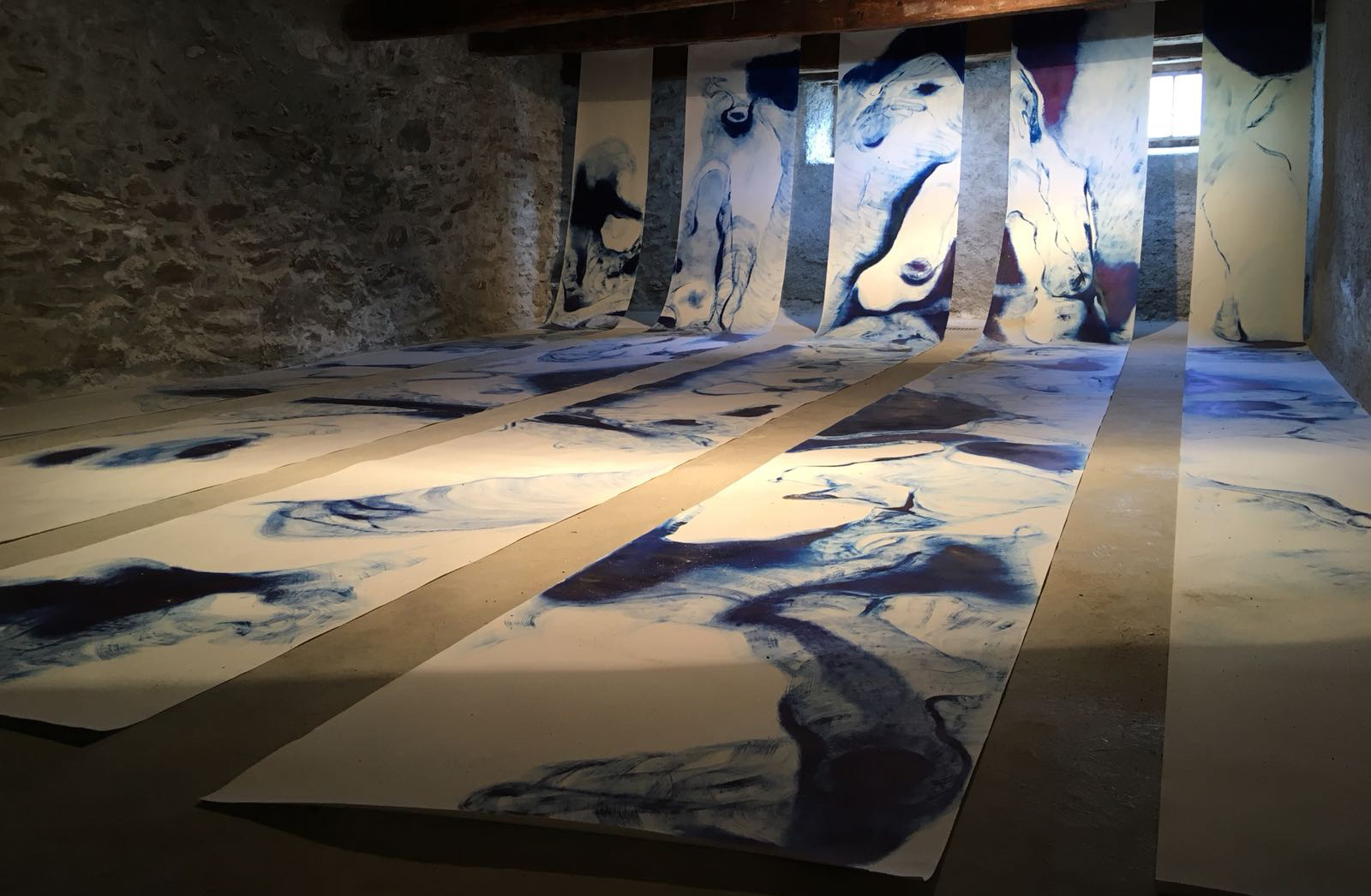
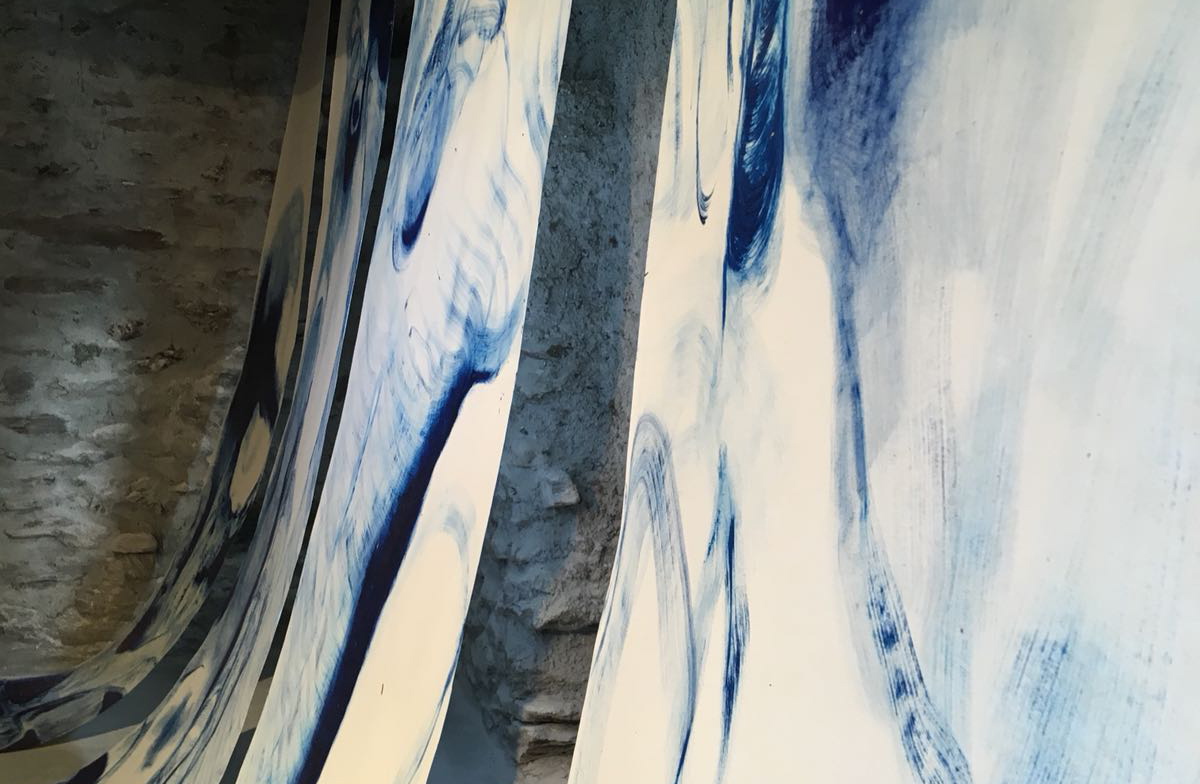
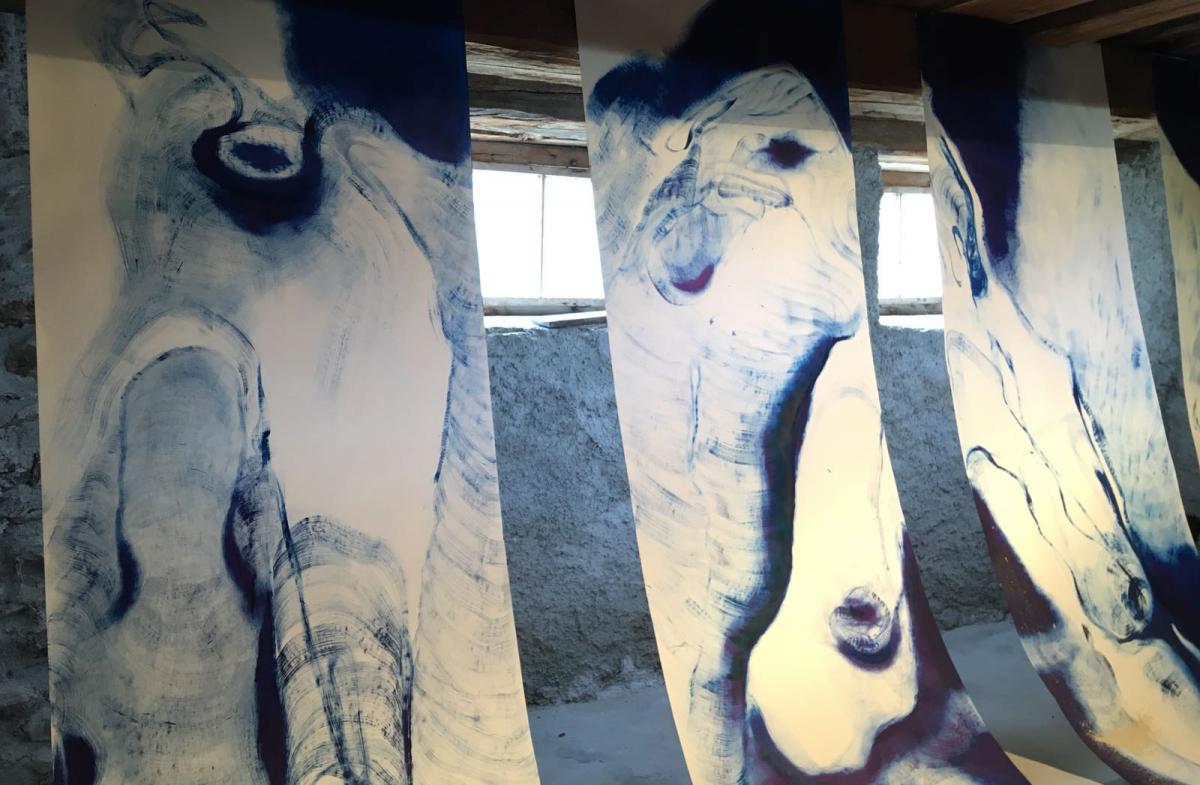
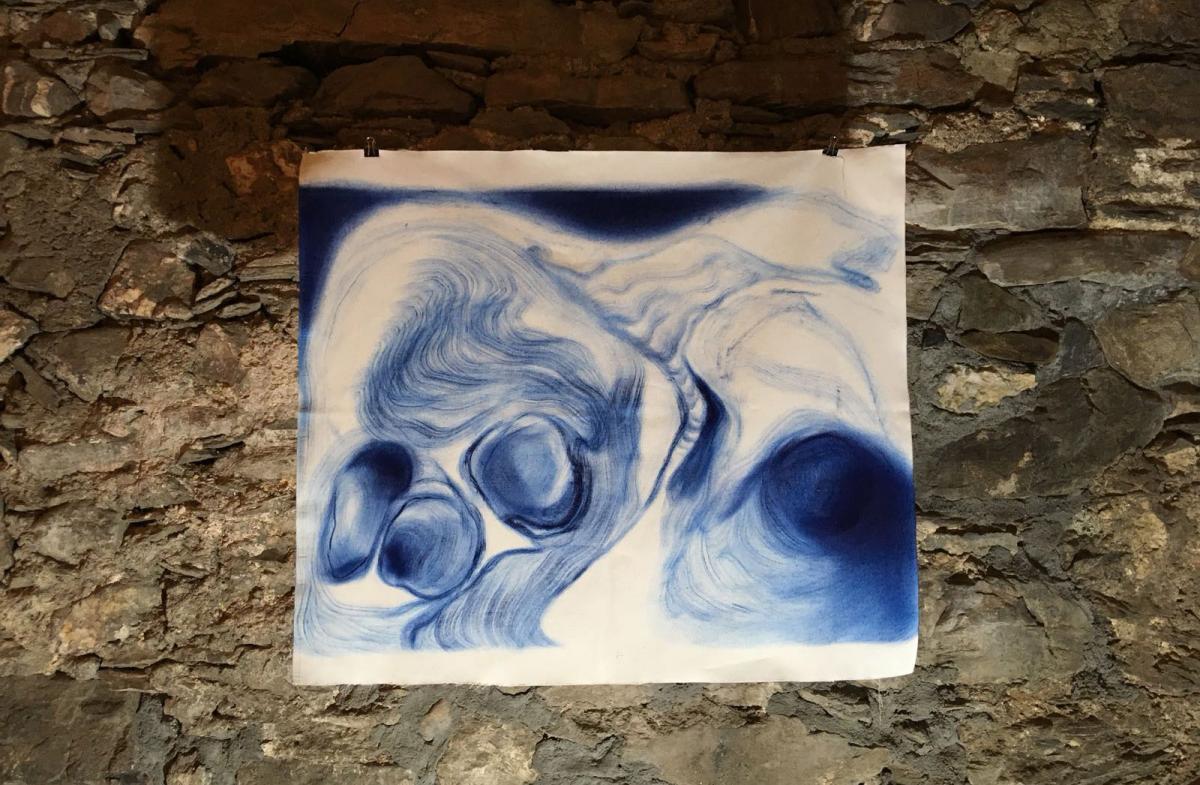
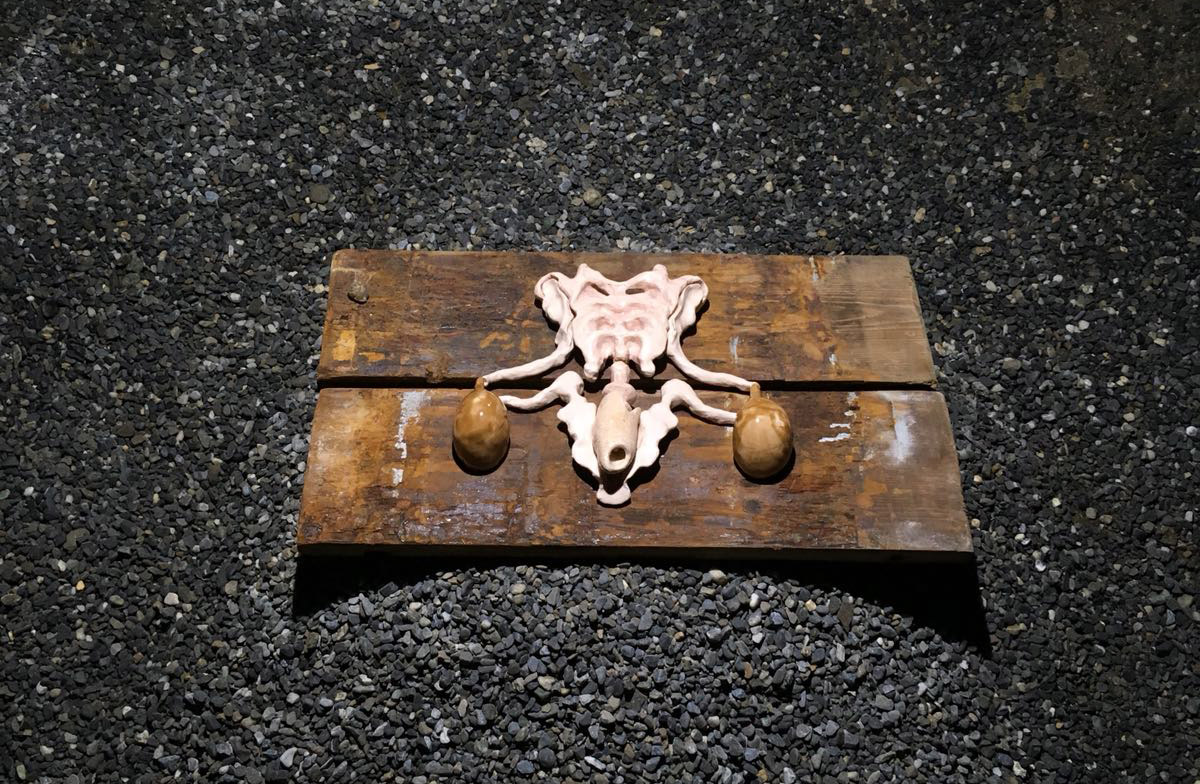
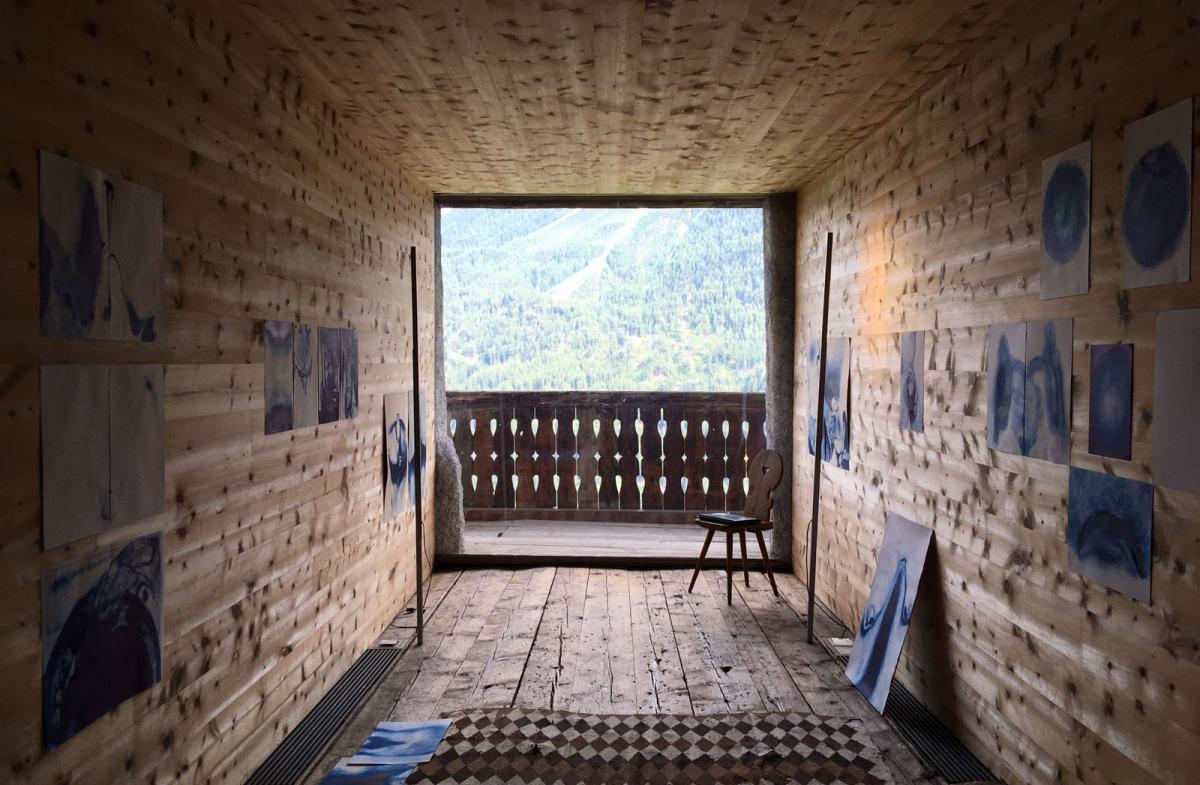
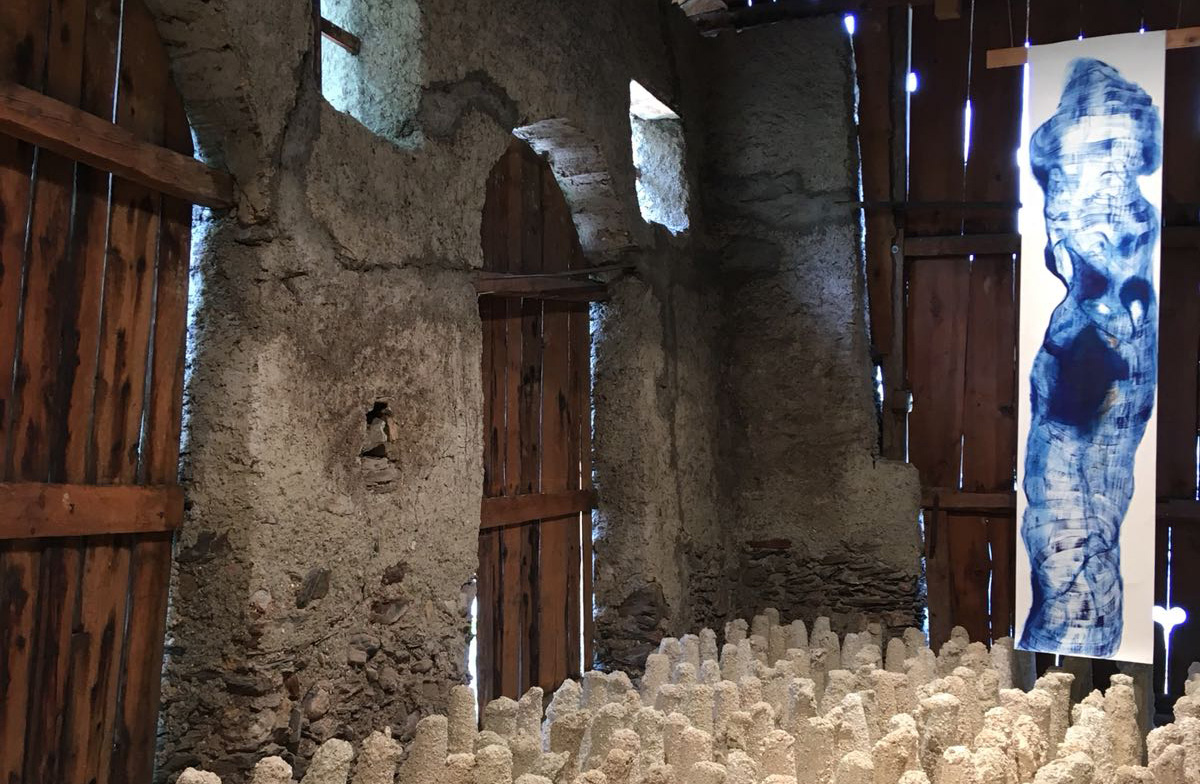
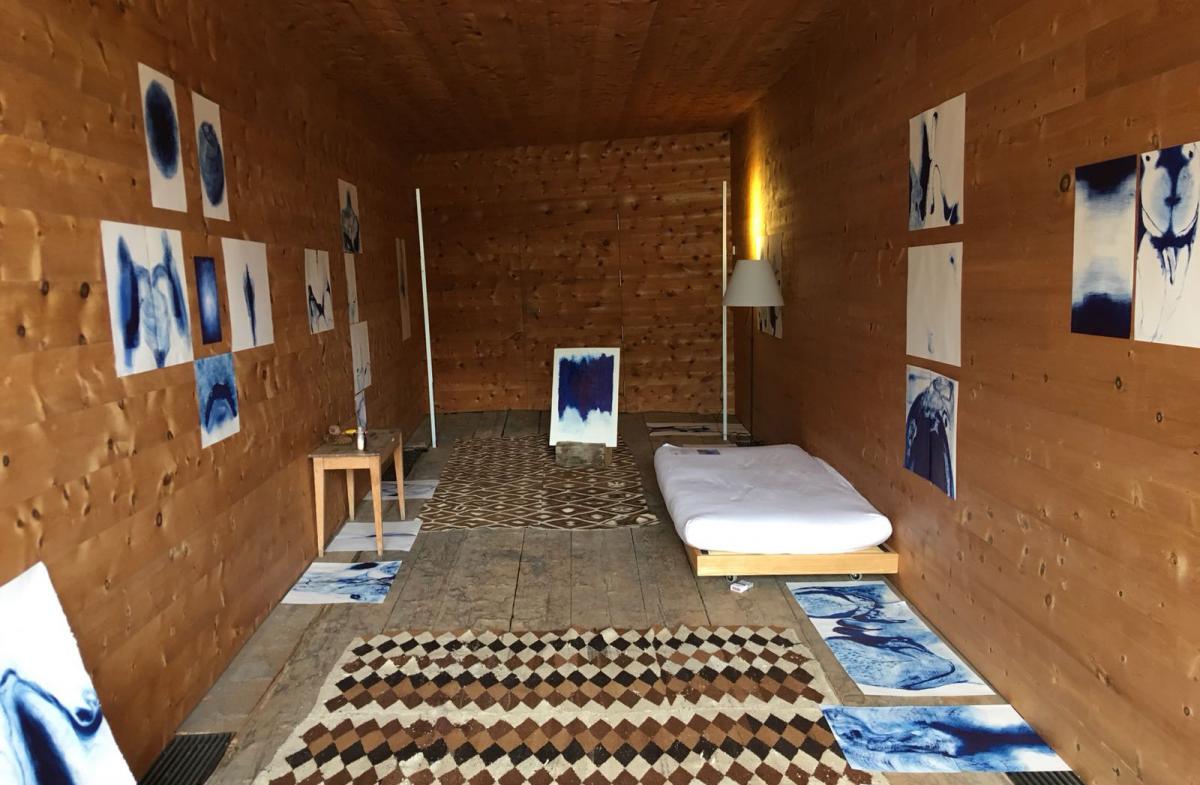
Opening: Friday 27 July, 3pm
28 July – 7 September 2018
Proyecto AMIL
Tschlin, Switzerland
To gain access to the exhibition, please go to the Restaurant Macún at Bügliet 49, Tschlin.
Proyecto AMIL is pleased to announce T, a solo exhibition by the Peruvian artist Sandra Salazar that coincides with her residency at Proyecto AMIL in Tschlin, Switzerland. The exhibition is fundamentally composed of two sets of artworks: the sculptural project Genitales, produced in Lima between 2016 and 2017, and Urano and Territorio de desplazamiento created this year during her residency.
With this exhibition in Switzerland, Salazar expands her project Paisaje masculino, developed as part of the Collaborative Laboratory of Contemporary Art Haciendo Contexto II organized by Proyecto AMIL in February 2018. Salazar’s work is an exploration of the transgender body and the possibilities of synthetic modification related to the consumption of testosterone. Salazar decomposes the normative signs of sexual difference, making the masculine and the feminine coexist in an exercise to feed herself with images of recognition and affective identification. The title T refers to the use of testosterone but also to the possibilities of transition associated with technology.
The writer and curator Miguel A. López describes the works of Salazar exhibited in Tschlin as follows:
Urano Irradiating the Mountain
Since 2016, Sandra Salazar has produced an extensive repertoire of bodies through different media, such as: drawings, large-format paintings, ceramics and installations. Her works documents the sensations and personal images that afterwards she delicately transfers to paper or clay. In these works, the artist seems to want to disassemble the flesh, the bones, the organs and their systems (reproductive, respiratory, locomotor, excretory), the hormones and their metabolism, the fluids, the nervous fibers and their intricate apparatus of electrical communication and chemistry. The result is a series of landscapes and objects that undo the marks of sexual difference, colliding the systems of signs that organize the normative regime of masculine and feminine.
But if we see in her images a mere play of forms around the human figure is necessary to look again. Salazar does not offer us an anatomy atlas or the representation of a passive body ready for clinical or psychiatric inspection. Quite the opposite: her work circles around what can not be absorbed by the gaze of medical discourse, questioning the legal frameworks that seek to define which bodies are suitable for public space and intimacy. The pictorial and tactile geographies -body and space- that Salazar rehearses are questions about the relationship between visibility and autonomy, between visual epistemology and the struggles for self-determination, between the devices that construct us as sexual bodies and the opportunity to create symbols for affective recognition and self-identification.
Her is an exercise that, to some extent, is related to the work artists and activists who have operated as critical geographers of the production of sexuality; such as Carol Rama, Eva Hesse, Phia Ménard, Annie Sprinkle, Bob Flanagan, Renate Lorenz and Pauline Boudry, Lorenza Böttner or Sergio Zevallos. Salazar observes how the iconography of sexual anatomy – infused into biology classes and verified in the rituality of medical care – is not merely descriptive but performative and artefactual: it produces the subjectivities of bodies, impacts on us as if it was a planet being hit by the comet of identities. But any collision leaves fragments and cracks from where to obstruct or revert the conventional processes of social identification. Salazar works meticulously with these materials: she cuts and fits limbs, holes, ducts, liquids and organs that invoke another visual genealogy for the human and its possibilities.
The title of the exhibition, T, suggests a vocabulary of proliferation and displacement: transition, territory, technology, time, transaction, testosterone. Her efforts to represent make visible how the experience of living as a transgender body is crossed by the accelerated logics of capitalism and the institutional architecture of identity discipline (the school, the hospital, the military service, the church, the court, the family, the document of identity, the public bath, among others), all intensified in a country like Peru marked by the persistence of colonial history. In this context, for Salazar, the act of creating emerges as an opportunity to reprogram her surroundings and her subjectivity.
T is fundamentally composed of two sets of artworks: the sculptural project Genitales (2016-2017) produced in Lima and Urano and Territorio de desplazamiento (2018) produced throughout her residency in Tschlin. Genitales is a series of ceramics that invert the functions and appearance of the reproductive organs. Salazar seems to propose new and better variations for the anatomical development and the functioning of the body. The non-binary genitality of the sculptures bifurcates between representations of bone structures and of the endocrine system, composing combinations for which there is still no name: open ovules, double penises, ovaries that become testicles, a glans that resembles the shape of a vulva. This alternative genital morphology invites us to think about the syntax of gender and the universe of variants that open up from the experience of the trans body.
This alternative genital morphology invites us to rethink the visual syntax of gender and the universe of alternatives that open up from the experience of the trans body. On the one hand, Salazar explores the impact of hormones on bodies and how their control by the medical and pharmaceutical industry has been – and continues to be – one of the most sophisticated forms of regulation of the social body and the imposition of regulations on ways of living sexuality. And on the other, the artist deliberates on the uncertainties of undergoing surgically transition and the intervention processes associated with it: hysterectomy (removal of the uterus), phalloplasty (reconstruction of the penis and testicles), among others. Her work, however, function as a space for reconciliation. The delicacy of the sculptures, the traces of their malleability and the beauty of their ending seem to seek to repair the violence with which the experience of sexual identity has been implanted in our lives.
Her two recent works, Urano and Territorio de desplazamiento, distance themselves from the more explicit body representation. Urano is an abstract drawing in cyan color, the circular shape and chromatic intensity calls to mind a wide repertoire of connotations: a threshold, the open flesh, an orifice, an explosion, sidereal time, a cell, a planet, a conduit. The artist transfigures the body into a spectrum rid of anatomical, hormonal or genetic characteristics, representing it as expanding energy whose movement is impossible to follow or measure.
Territorio de desplazamiento is another form of landscape made of long strips of paper, divided and placed from the ceiling to the floor. This work, irradiated symbolically by the flashes of Urano, acts like a seismograph of sensations of a body transformed into an organic fluid of blue pigment across the paper through the space. The scale of the installation seems to play with the heroic dimensions of the masculine body but removes its marks of authority: the body of this installation has no center or hierarchy and invites us to imagine another economy of desire.
The last of the artworks consists in a projection of the Piz Lad mountain -located in front of the residency house in Tschlin- escorted by an installation of drawings. The image appears as an analogy between the exterior and the interior, between the body geography and the botanical topography. For the artist it is about an equivalence on presence: just as Piz Lad appears duplicated, the drawings and the body offer a reversible and complementary experience of oneself. Her work is clearly an answer to this present time, to a contemporaneity where the T is opening new forms of choice and fulfilment, be it in legal spaces or in clandestinity.
Miguel A. López
San José, julio de 2018
About the artist
Sandra Salazar (1989) is currently in the fourth year of a painting career at the Escuela Nacional Superior Autónoma de Bellas Artes del Perú (National Superior Autonomous School of Fine Arts of Peru). She has been researching gender issues since the beginning of her career and her current focus is the deconstruction of femininity and the construction of masculinity, from the use in this context of technological artefacts and the consumption of testosterone.
Proyecto AMIL
Bügliet 49
Tschlin, Switzerland